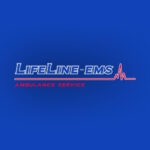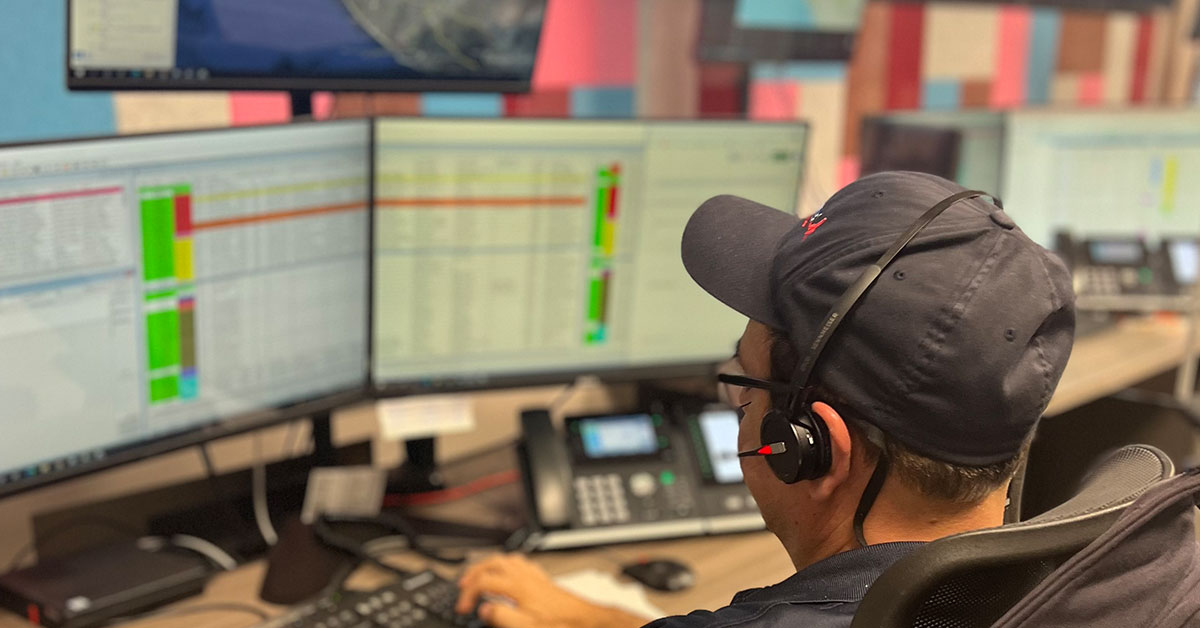In the fast-paced world of emergency medical services (EMS), staying ahead of the curve requires continuous innovation and the integration of advanced technologies. LifeLine EMS, a leading provider in Los Angeles and Southern California, is at the forefront of this transformation, leveraging cutting-edge tools and strategies to enhance patient care and improve customer experiences. By embracing new technologies and focusing on efficiency, accuracy, and responsiveness, LifeLine EMS is redefining what it means to deliver top-tier EMS services. This article explores how LifeLine EMS is pioneering technology to achieve better patient outcomes and superior customer experiences.
Leveraging Advanced Technology for Superior Patient Care
To provide the highest level of care, LifeLine EMS uses advanced technologies that streamline operations, improve response times, and enhance the quality of patient care. Here are some of the key technological advancements LifeLine EMS is utilizing to elevate patient outcomes.
1. Integrating Telemedicine for Real-Time Support
Telemedicine has become a game-changer in EMS by allowing emergency responders to consult with medical professionals remotely and in real-time. LifeLine EMS has integrated telemedicine into its daily operations, bringing numerous benefits to both patients and EMS teams.
- Immediate Medical Consultation: Telemedicine enables EMTs and paramedics to connect with physicians and specialists directly from the field. This immediate access to medical expertise helps determine the best course of action for patients and ensures that they receive appropriate care on the spot.
- Reduced Hospital Transports: By consulting with doctors remotely, EMS teams can decide if a patient needs to be transported to the hospital or if they can be treated at the scene. This approach reduces unnecessary hospital admissions, lowers healthcare costs, and improves resource allocation.
- Enhanced Decision-Making: Real-time medical support via telemedicine allows EMS teams to make informed decisions quickly, which is critical in emergencies where every second counts.
2. Utilizing Electronic Patient Care Reporting (ePCR) Systems
LifeLine EMS has adopted Electronic Patient Care Reporting (ePCR) systems, which replace traditional paper documentation with digital records. This shift to digital reporting enhances the efficiency, accuracy, and accessibility of patient data.
- Streamlined Documentation: ePCR systems allow EMS personnel to quickly and accurately input patient information, vital signs, and treatment details directly into digital forms. This reduces the time spent on paperwork and minimizes the risk of errors.
- Improved Communication: Digital records are immediately accessible to receiving hospitals and healthcare providers, ensuring seamless communication and continuity of care during patient handoffs.
- Data Analytics for Continuous Improvement: The ePCR system provides valuable data that can be analyzed to identify trends, assess performance, and implement quality improvement initiatives, ultimately leading to better patient outcomes.
3. Deploying Advanced GPS and Dispatch Systems
Efficient dispatching is essential for rapid EMS response. LifeLine EMS employs advanced GPS and dispatch systems to optimize resource allocation and minimize response times.
- Optimized Routing: GPS technology ensures that ambulances take the fastest routes to emergency scenes, reducing travel time and improving response rates.
- Dynamic Dispatching: Advanced dispatch systems use real-time data to allocate resources dynamically, ensuring that the closest available ambulance is sent to an emergency, thus minimizing delays.
- Predictive Analytics: By analyzing historical data, LifeLine EMS can predict peak demand periods and strategically position resources to ensure readiness during high-traffic times.
Enhancing Customer Experience Through Technology
Providing exceptional customer experience is a priority for LifeLine EMS. By using technology to streamline processes, communicate effectively, and ensure transparency, LifeLine EMS improves customer satisfaction and builds trust within the communities it serves.
1. Implementing Customer Feedback Systems
LifeLine EMS understands the importance of customer feedback in maintaining high service standards. The organization has implemented digital feedback systems that allow patients and their families to share their experiences easily.
- Real-Time Feedback Collection: Digital surveys and feedback forms sent via email or SMS enable LifeLine EMS to collect feedback quickly after a service is provided, ensuring timely responses to any concerns or issues.
- Data-Driven Service Improvements: Analyzing feedback helps identify areas for improvement, such as response times, communication quality, or patient interactions, allowing LifeLine EMS to continuously refine its services.
- Building Trust and Transparency: Actively seeking feedback and making visible improvements demonstrates a commitment to patient satisfaction and fosters trust between LifeLine EMS and the community.
2. Offering Online Patient Portals
To enhance transparency and accessibility, LifeLine EMS provides online patient portals where patients and their families can access essential information about their care.
- Access to Medical Records: Patients can view their medical records, treatment details, and billing information, providing greater transparency and allowing for informed decision-making about their care.
- Appointment Scheduling and Follow-Up: Online portals enable easy scheduling of non-emergency transport services and follow-up appointments, ensuring that patients receive timely and coordinated care.
- Resource Availability: Patients and their families can access educational resources on health topics, emergency preparedness, and post-care instructions, empowering them to take an active role in their health management.
3. Utilizing Mobile Apps for Enhanced Communication
LifeLine EMS leverages mobile applications to improve communication with patients, healthcare providers, and other stakeholders.
- Real-Time Notifications: Mobile apps provide real-time updates on the status of an ambulance, estimated arrival times, and any changes to the patient’s condition during transport, keeping patients and families informed.
- Direct Communication Channels: Patients and families can use mobile apps to communicate directly with LifeLine EMS, ask questions, or provide updates, ensuring they are always in the loop.
- Enhanced Coordination with Healthcare Providers: Mobile apps facilitate seamless communication between EMS teams and hospitals, ensuring that receiving medical staff is prepared for patient arrival and that care transitions smoothly.
Driving Operational Efficiency with Data-Driven Insights
Data analytics plays a crucial role in LifeLine EMS’s approach to innovation. By harnessing the power of data, LifeLine EMS can make informed decisions, optimize resources, and continuously improve service delivery.
1. Utilizing Predictive Analytics for Resource Management
Predictive analytics helps LifeLine EMS anticipate demand and allocate resources more effectively.
- Demand Forecasting: Analyzing historical data enables LifeLine EMS to predict when and where emergency calls are most likely to occur, allowing them to position ambulances and staff strategically.
- Resource Optimization: Predictive models help identify the most efficient use of resources, from personnel to equipment, ensuring that LifeLine EMS is prepared to respond to emergencies at all times.
- Performance Monitoring: Data-driven insights allow LifeLine EMS to track key performance metrics, such as response times, patient outcomes, and resource utilization, providing a basis for continuous improvement.
2. Enhancing Quality of Care with Data Analytics
LifeLine EMS uses data analytics to monitor and enhance the quality of care provided to patients.
- Identifying Trends: By analyzing data from patient care reports, LifeLine EMS can identify trends and patterns in patient conditions, treatments, and outcomes, allowing them to refine protocols and improve care delivery.
- Implementing Quality Improvement Initiatives: Data-driven insights help pinpoint areas for improvement, such as reducing response times or enhancing patient communication, leading to targeted quality improvement initiatives.
- Ensuring Compliance and Accountability: Analytics tools help LifeLine EMS ensure compliance with regulatory standards and internal protocols, maintaining high standards of care and accountability.
Investing in Staff Training and Development
LifeLine EMS recognizes that its success depends on the skills and dedication of its employees. The organization invests heavily in training and development to ensure its staff is prepared to leverage new technologies and deliver top-notch care.
1. Providing Ongoing Training in Technology Use
LifeLine EMS provides comprehensive training programs that equip EMTs and paramedics with the skills needed to use advanced technologies effectively.
- Technology Integration Training: Regular training sessions are conducted to familiarize staff with new tools, such as ePCR systems, telemedicine platforms, and mobile apps, ensuring they can use these technologies confidently and efficiently.
- Scenario-Based Simulations: LifeLine EMS uses simulations to train EMS professionals on how to utilize technology during real-life scenarios, such as using telemedicine in complex emergencies or navigating digital patient care reports.
- Continuing Education Programs: The organization offers continuing education programs focused on emerging technologies, best practices, and advanced medical procedures, keeping staff up-to-date with the latest developments in EMS.
2. Fostering a Culture of Innovation
LifeLine EMS encourages a culture of innovation by empowering its employees to suggest new ideas, participate in pilot programs, and contribute to the organization’s continuous improvement efforts.
- Idea Sharing and Collaboration: Regular meetings and workshops provide opportunities for employees to share their ideas and collaborate on innovative projects.
- Employee-Led Innovation Programs: LifeLine EMS supports employee-led innovation programs that allow staff to test new technologies, propose process improvements, and help shape the future of the organization.
- Recognition and Rewards: Employees who contribute to successful innovations or improvements are recognized and rewarded, fostering a culture that values creativity and forward-thinking.
Keep Reading
Want more? Here are some other blog posts you might be interested in.
Emergency Medical Services s a high-stress, physically demanding profession that requires dedication, quick decision-making, and resilience. While the rewards of saving lives...
Emergency Medical Services are evolving rapidly, and data analytics is playing a crucial role in improving patient care. LifeLine EMS, a leader...
The field of Emergency Medical Services is constantly evolving, and with it, the methods used to train EMS professionals. Traditional classroom-based learning...






